Abstract
After 25 free-operant avoidance training sessions, a 1-min signal followed by a brief shock was presented on the average of once every 4 min. During the signal, the avoidance schedule was suspended (20 sessions). Response rates during the signal were markedly reduced. Shock rates during non-signalled periods increased. Fifteen additional sessions were given during which the signal was presented without shock. Response rates during signalled periods were greater than previously observed during signalled periods, indicating that signalled shock had suppressive control over a previously acquired avoidance response rate.
Full text
PDF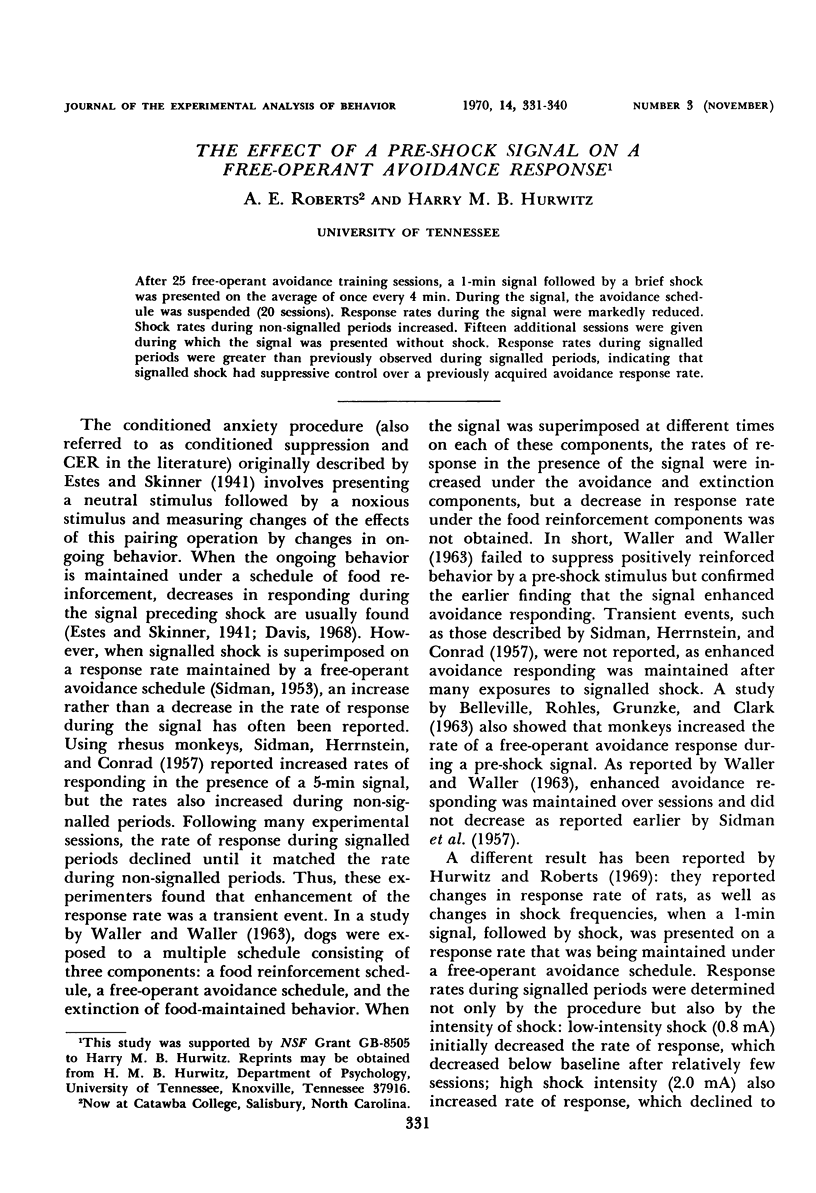
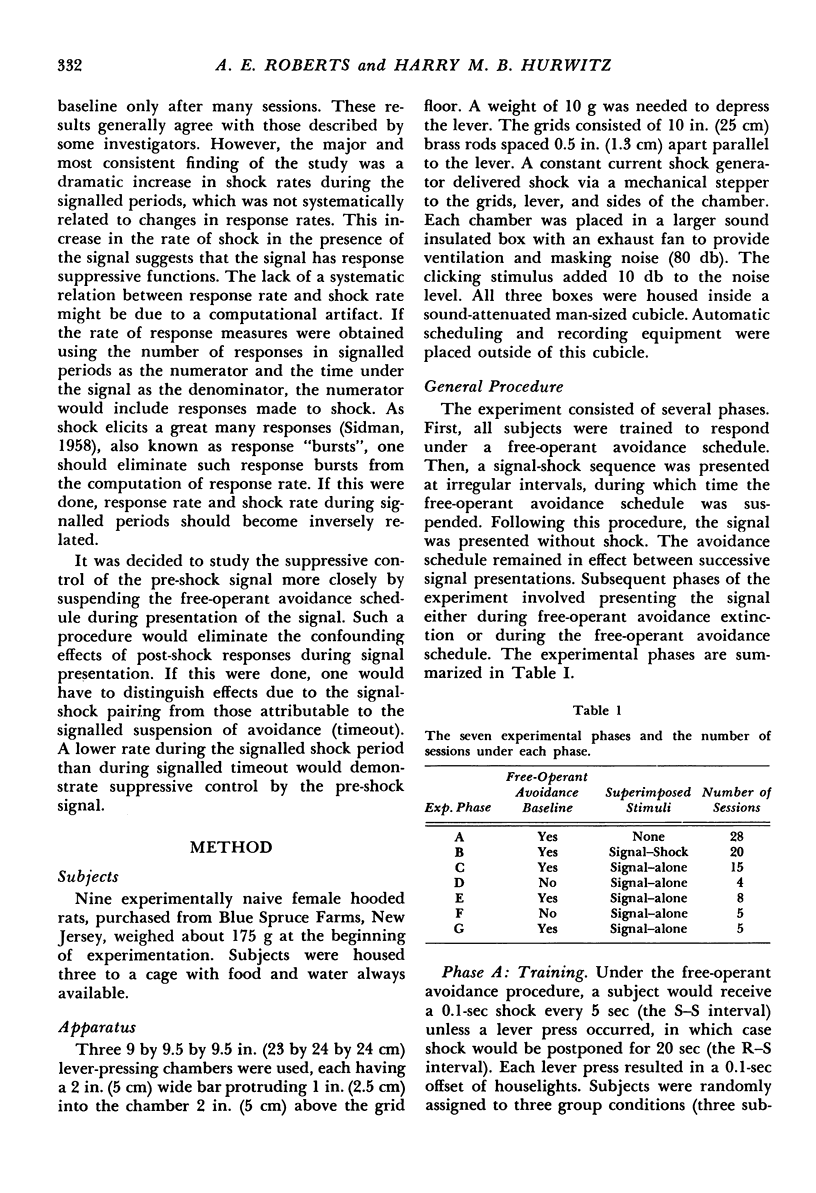
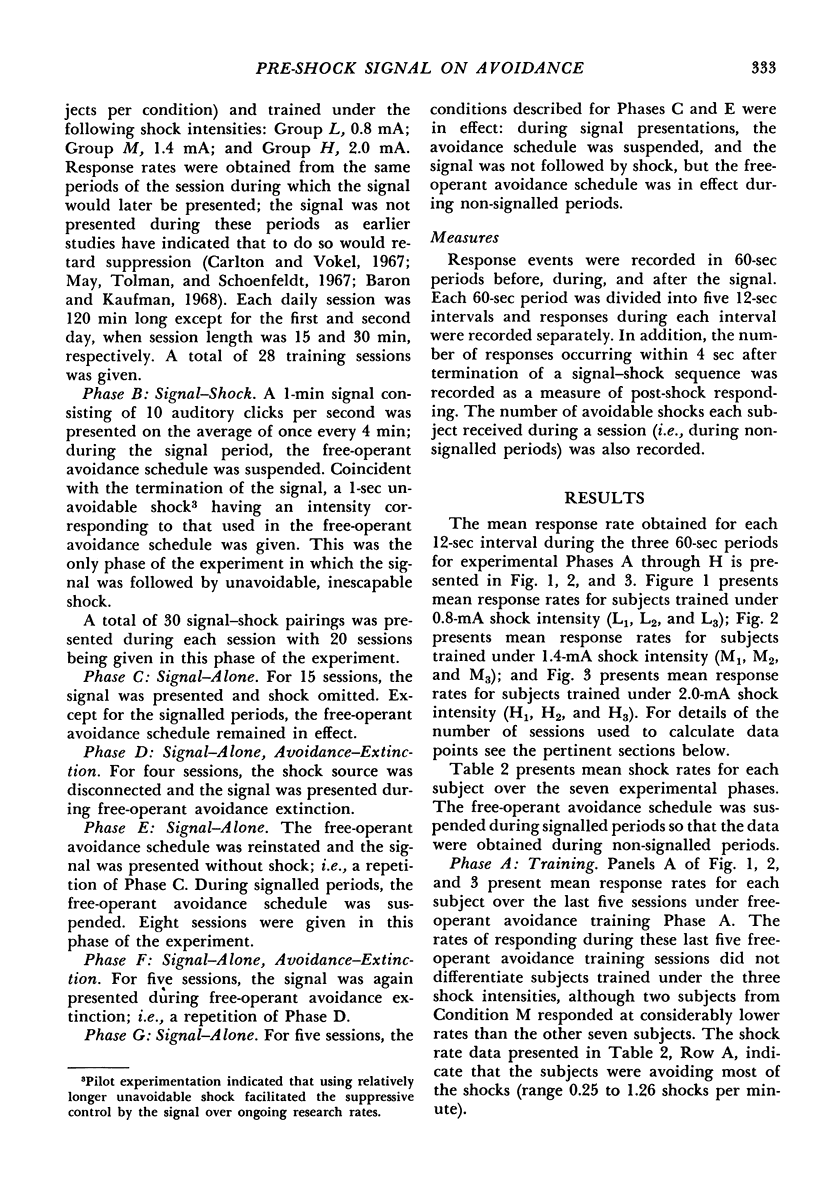
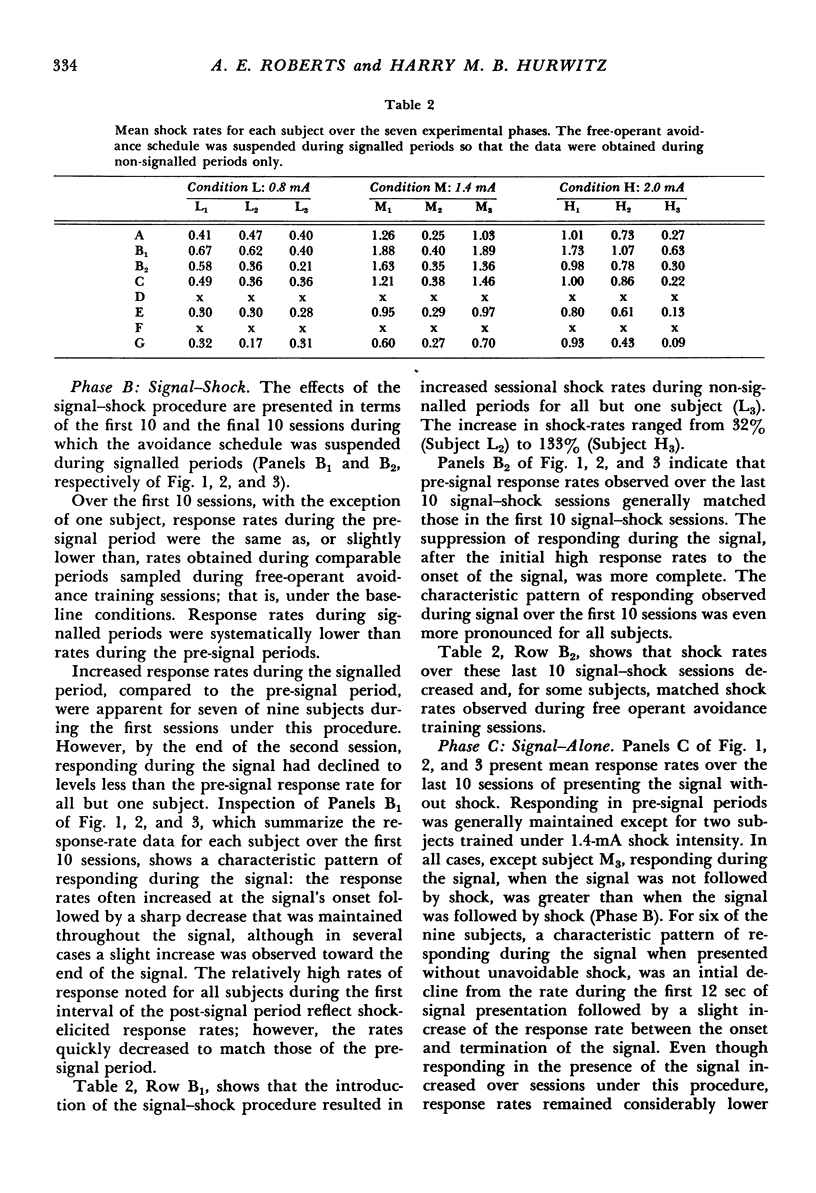
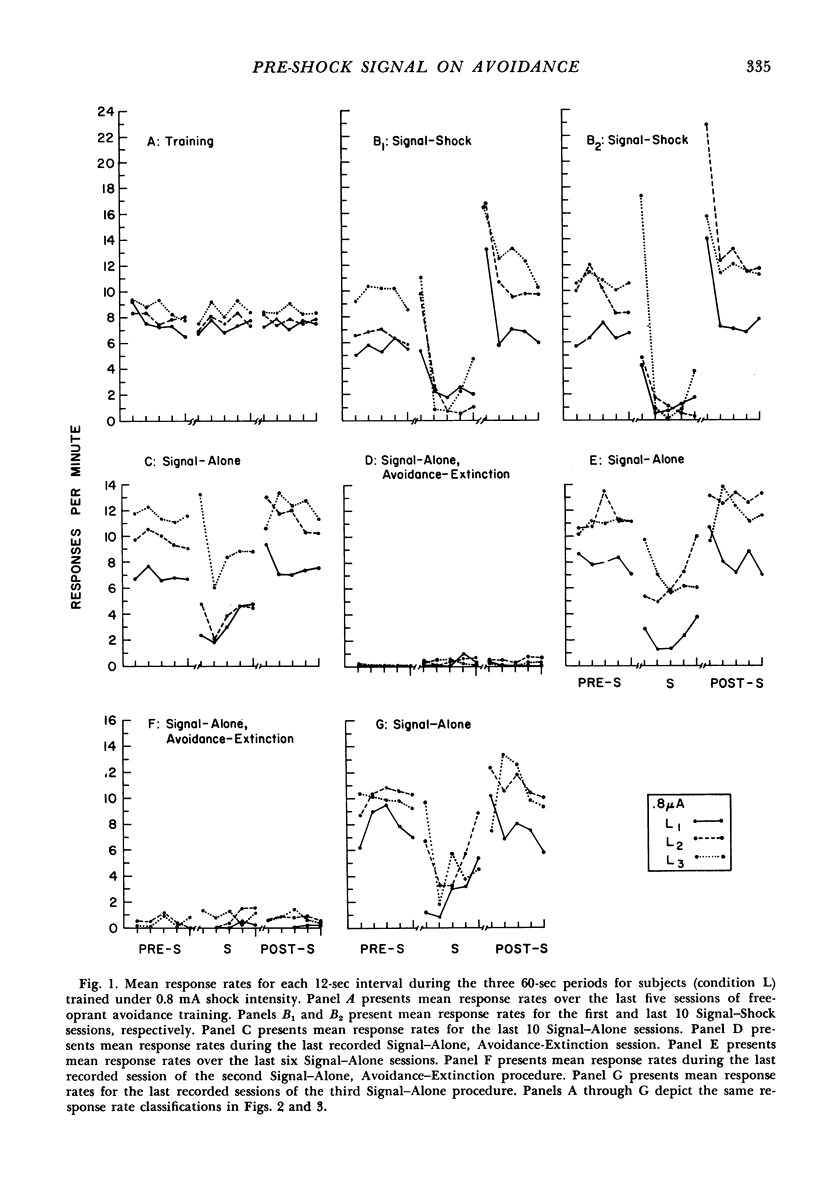
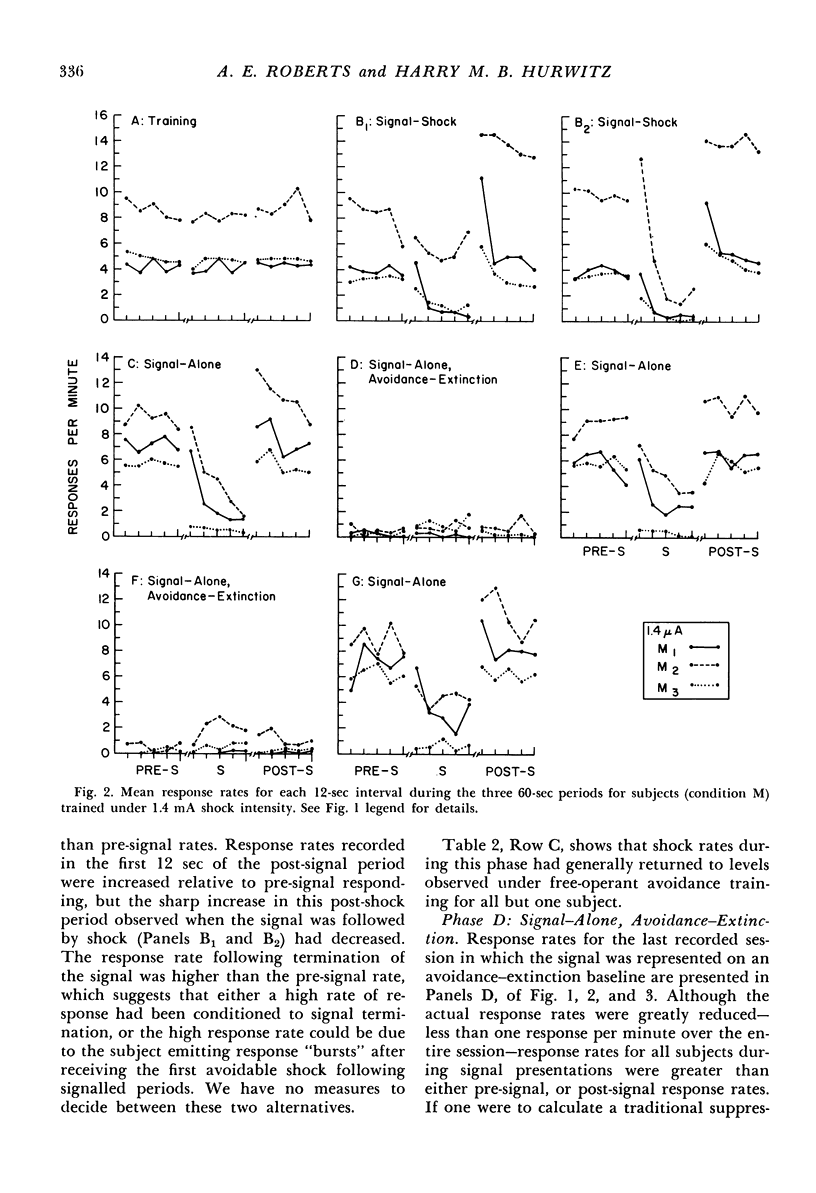
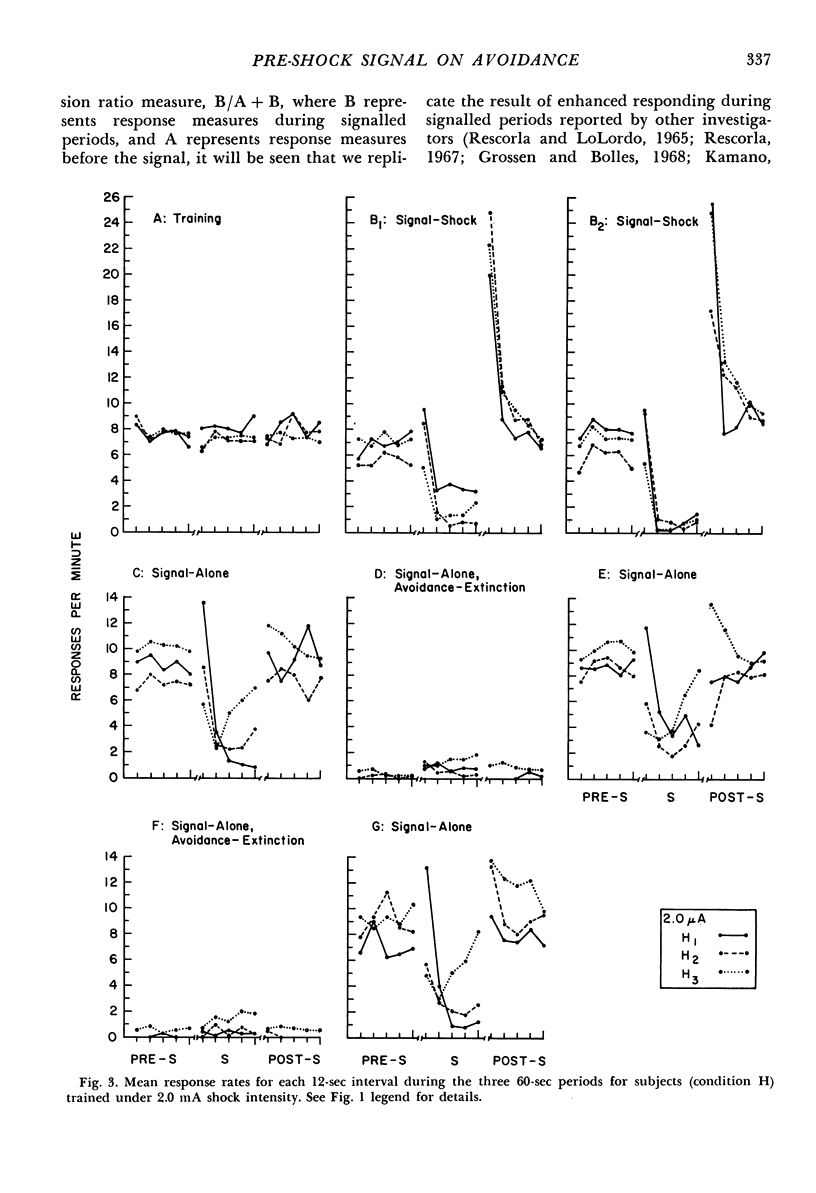
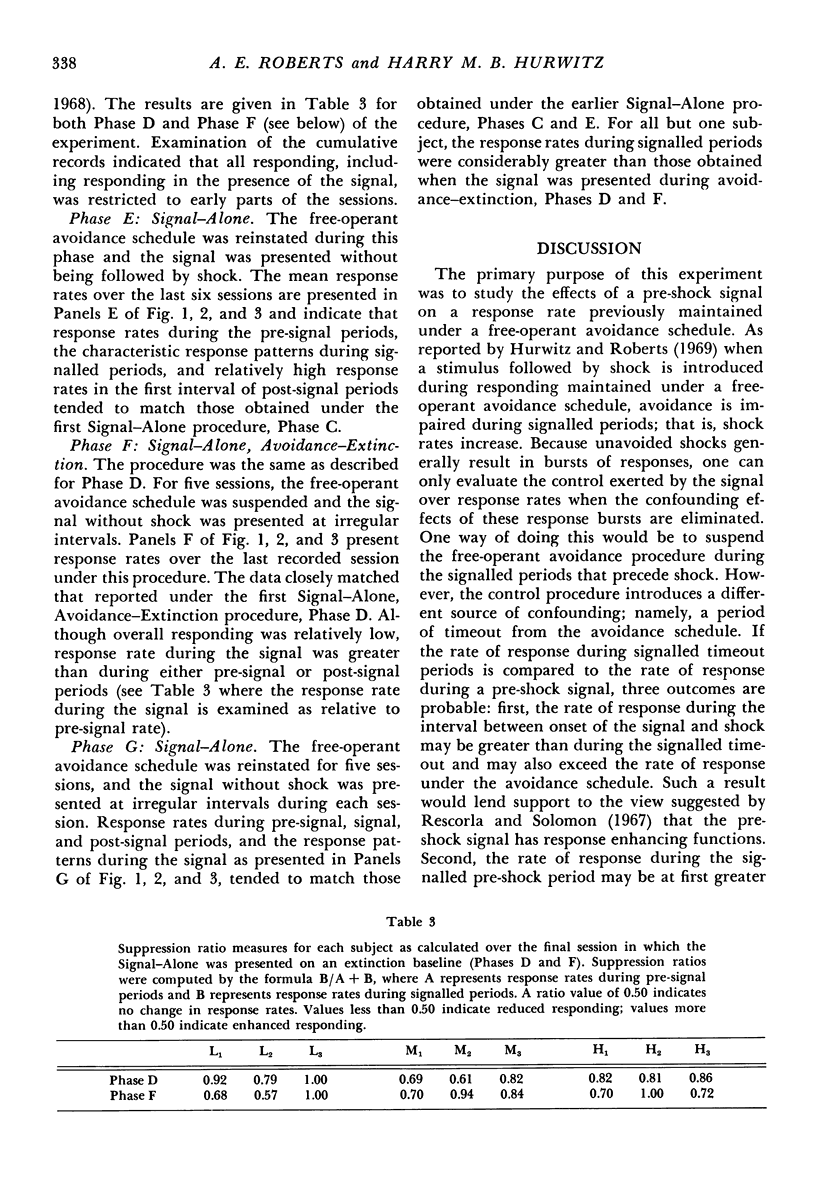
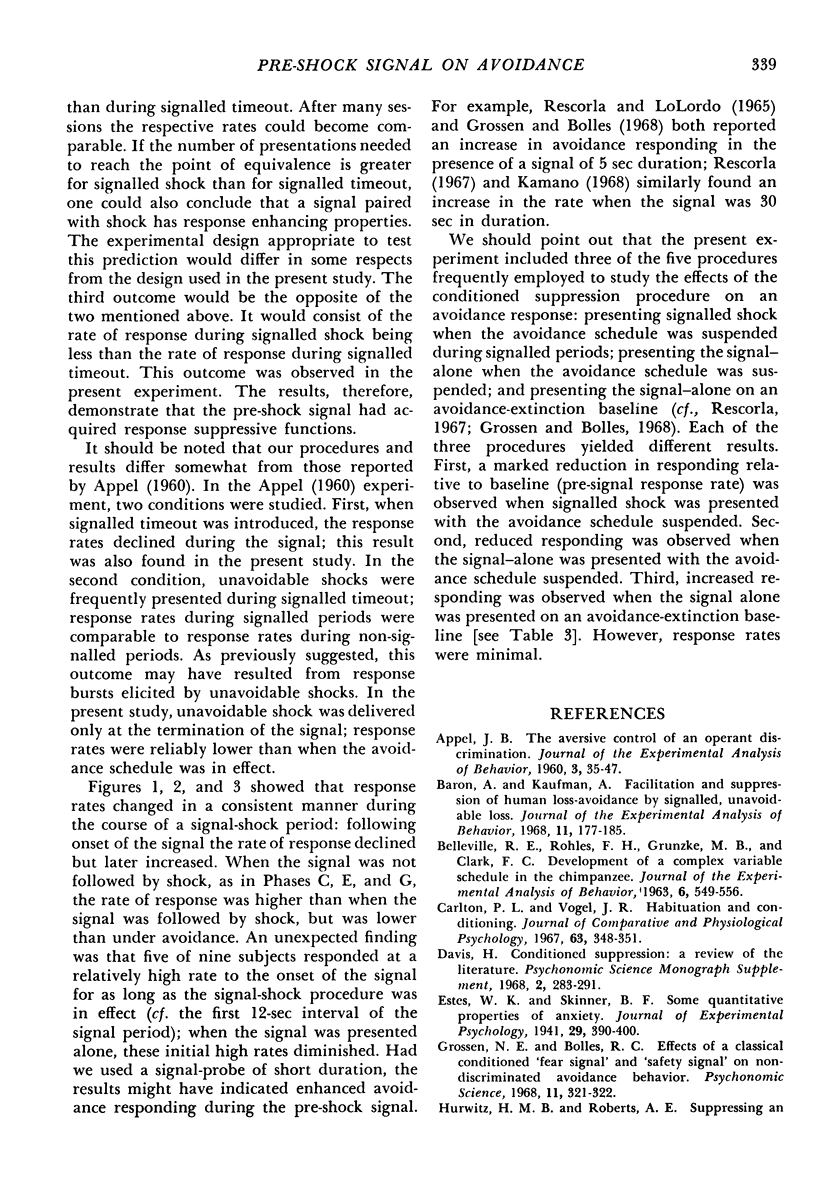
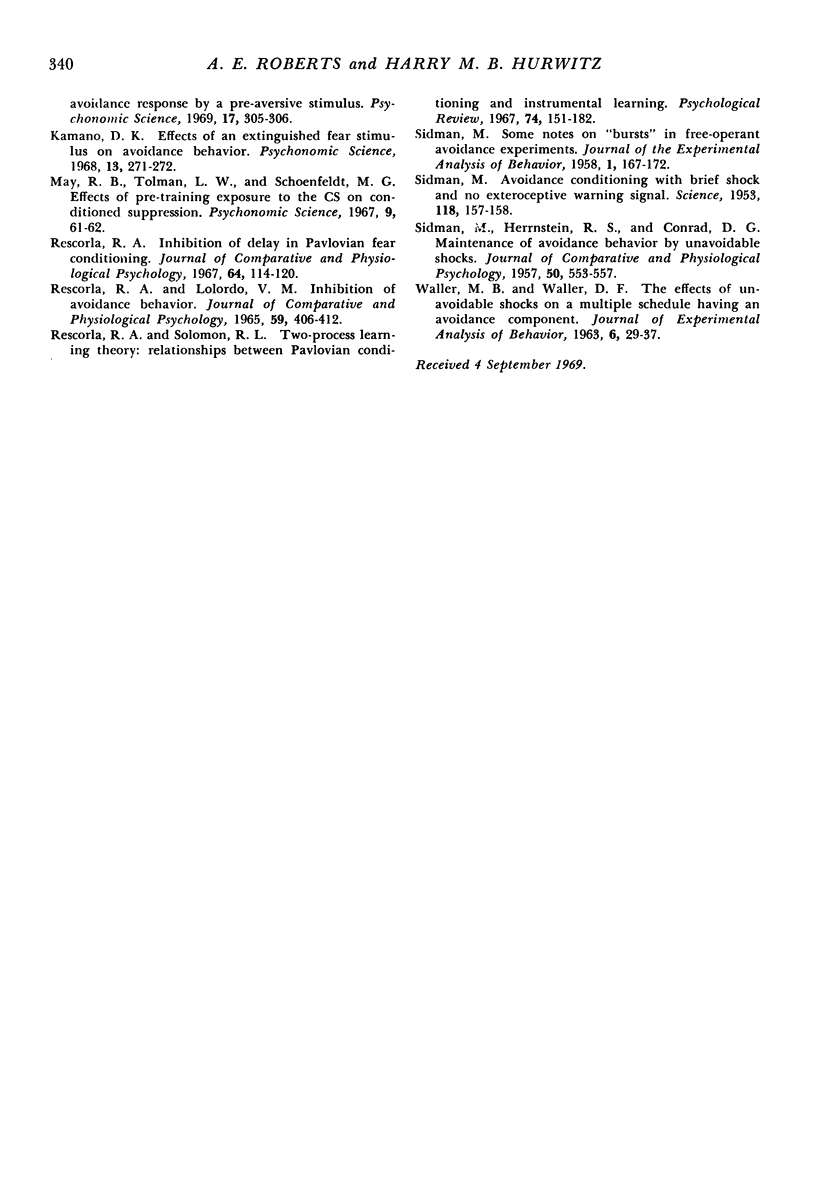
Selected References
These references are in PubMed. This may not be the complete list of references from this article.
- Appel J. B. The Aversive Control of an Operant Discrimination. J Exp Anal Behav. 1960 Jan;3(1):35–47. doi: 10.1901/jeab.1960.3-35. [DOI] [PMC free article] [PubMed] [Google Scholar]
- BELLEVILLE R. E., ROHLES F. H., GRUNZKE M. E., CLARK F. C. DEVELOPMENT OF A COMPLEX MULTIPLE SCHEDULE IN THE CHIMPANZEE. J Exp Anal Behav. 1963 Oct;6:549–556. doi: 10.1901/jeab.1963.6-549. [DOI] [PMC free article] [PubMed] [Google Scholar]
- Baron A., Kaufman A. Facilitation and suppression of human loss-avoidance by signaled, unavoidable loss. J Exp Anal Behav. 1968 Mar;11(2):177–185. doi: 10.1901/jeab.1968.11-177. [DOI] [PMC free article] [PubMed] [Google Scholar]
- Carlton P. L., Vogel J. R. Habituation and conditioning. J Comp Physiol Psychol. 1967 Apr;63(2):348–351. doi: 10.1037/h0024372. [DOI] [PubMed] [Google Scholar]
- RESCORLA R. A., LOLORDO V. M. INHIBITION OF AVOIDANCE BEHAVIOR. J Comp Physiol Psychol. 1965 Jun;59:406–412. doi: 10.1037/h0022060. [DOI] [PubMed] [Google Scholar]
- Rescorla R. A. Inhibition of delay in Pavlovian fear conditioning. J Comp Physiol Psychol. 1967 Aug;64(1):114–120. doi: 10.1037/h0024810. [DOI] [PubMed] [Google Scholar]
- Rescorla R. A., Solomon R. L. Two-process learning theory: Relationships between Pavlovian conditioning and instrumental learning. Psychol Rev. 1967 May;74(3):151–182. doi: 10.1037/h0024475. [DOI] [PubMed] [Google Scholar]
- SIDMAN M. Avoidance conditioning with brief shock and no exteroceptive warning signal. Science. 1953 Aug 7;118(3058):157–158. doi: 10.1126/science.118.3058.157. [DOI] [PubMed] [Google Scholar]
- SIDMAN M., HERRNSTEIN R. J., CONRAD D. G. Maintenance of avoidance behavior by unavoidable shocks. J Comp Physiol Psychol. 1957 Dec;50(6):553–557. doi: 10.1037/h0043500. [DOI] [PubMed] [Google Scholar]
- Sidman M. Some Notes on "Bursts" in Free-operant Avoidance Experiments. J Exp Anal Behav. 1958 Apr;1(2):167–172. doi: 10.1901/jeab.1958.1-167. [DOI] [PMC free article] [PubMed] [Google Scholar]
- WALLER M. B., WALLER P. F. The effects of unavoidable shocks on a multiple schedule having an avoidance component. J Exp Anal Behav. 1963 Jan;6:29–37. doi: 10.1901/jeab.1963.6-29. [DOI] [PMC free article] [PubMed] [Google Scholar]


